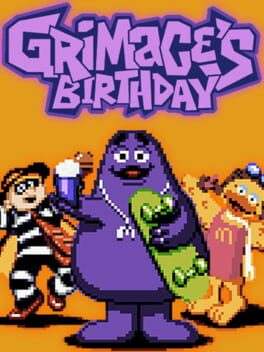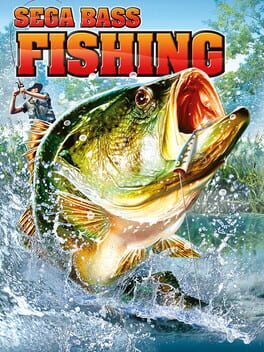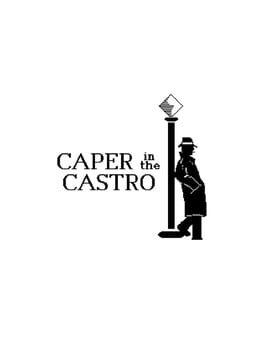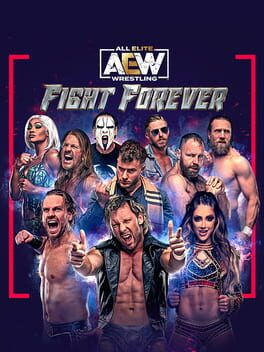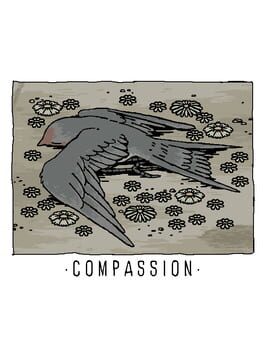ResidentMelville
1255 Reviews liked by ResidentMelville
Grimace's Birthday
2023
Grimace's Birthday
2023
A Black Mass is a ceremony typically said to be celebrated by various Satanic groups. It has allegedly existed for centuries in different forms and is directly based on, and is intentionally a sacrilegious and blasphemous mockery of, a Catholic Mass.[1]
In the 19th century the Black Mass became popularized in French literature, in books such as Satanism and Witchcraft, by Jules Michelet, and Là-bas, by Joris-Karl Huysmans.
Modern revivals began with H. T. F. Rhodes' book The Satanic Mass published in London in 1954, and there is now a range of modern versions of the Black Mass performed by various groups.
History
Early Catholicism
The Catholic Church regards the Mass as its most important ritual, going back to apostolic times. In general, its various liturgies followed the outline of Liturgy of the Word, Offertory, Liturgy of the Eucharist and Benediction, which developed into what is known as the Mass. However, as early Christianity became more established and its influence began to spread, the early Church Fathers began to describe a few heretical groups practicing their own versions of Masses. Some of these rituals were of a sexual nature.[2] The fourth-century AD heresiologist Epiphanius of Salamis, for instance, claims that a libertine Gnostic sect known as the Borborites engaged in a version of the Eucharist in which they would smear their hands with menstrual blood and semen and consume them as the blood and body of Christ respectively.[3] He also alleges that, whenever one of the women in their church was experiencing her period, they would take her menstrual blood and everyone in the church would eat it as part of a sacred ritual.[4]
Medieval Roman Catholic parodies and additions to the Mass
Within the Church, the rite of the Mass was not completely fixed, and there were places at the end of the Offertory for the Secret prayers, when the priest could insert private prayers for various personal needs. These practices became especially prevalent in France (see Pre-Tridentine Mass). As these types of personal prayers within the Mass spread, the institution of the Low Mass became quite common, where priests would hire their services out to perform various Masses for the needs of their clients (Votive Masses)—such as blessing crops or cattle, achieving success in some enterprise, obtaining love, or even cursing enemies (one way this latter was done was by inserting the enemy's name in a Mass for the dead, accompanied by burying an image of the enemy). Although these practices were condemned by Church authorities as superstitious and sacrilegious abuses, they still occurred secretively. In the 12th and 13th centuries there was a great surplus of clerics and monks who might be inclined to perform these Masses, as younger sons were often sent off to religious universities, and after their studies, needed to find a livelihood. Also within the Church, the ritual of the Mass was sometimes reworked to create light-hearted parodies of it for certain festivities. Some of these became quasi-tolerated practices at times—though never accepted by official Church authorities—such as a festive parody of the Mass called "The Feast of Asses", in which Balaam's ass (from the Old Testament) would begin talking and saying parts of the Mass. A similar parody was the Feast of Fools. Though often condemned, practitioners of such activities, called "Goliards", continued despite the Church's disapproval.
In the 19th century the Black Mass became popularized in French literature, in books such as Satanism and Witchcraft, by Jules Michelet, and Là-bas, by Joris-Karl Huysmans.
Modern revivals began with H. T. F. Rhodes' book The Satanic Mass published in London in 1954, and there is now a range of modern versions of the Black Mass performed by various groups.
History
Early Catholicism
The Catholic Church regards the Mass as its most important ritual, going back to apostolic times. In general, its various liturgies followed the outline of Liturgy of the Word, Offertory, Liturgy of the Eucharist and Benediction, which developed into what is known as the Mass. However, as early Christianity became more established and its influence began to spread, the early Church Fathers began to describe a few heretical groups practicing their own versions of Masses. Some of these rituals were of a sexual nature.[2] The fourth-century AD heresiologist Epiphanius of Salamis, for instance, claims that a libertine Gnostic sect known as the Borborites engaged in a version of the Eucharist in which they would smear their hands with menstrual blood and semen and consume them as the blood and body of Christ respectively.[3] He also alleges that, whenever one of the women in their church was experiencing her period, they would take her menstrual blood and everyone in the church would eat it as part of a sacred ritual.[4]
Medieval Roman Catholic parodies and additions to the Mass
Within the Church, the rite of the Mass was not completely fixed, and there were places at the end of the Offertory for the Secret prayers, when the priest could insert private prayers for various personal needs. These practices became especially prevalent in France (see Pre-Tridentine Mass). As these types of personal prayers within the Mass spread, the institution of the Low Mass became quite common, where priests would hire their services out to perform various Masses for the needs of their clients (Votive Masses)—such as blessing crops or cattle, achieving success in some enterprise, obtaining love, or even cursing enemies (one way this latter was done was by inserting the enemy's name in a Mass for the dead, accompanied by burying an image of the enemy). Although these practices were condemned by Church authorities as superstitious and sacrilegious abuses, they still occurred secretively. In the 12th and 13th centuries there was a great surplus of clerics and monks who might be inclined to perform these Masses, as younger sons were often sent off to religious universities, and after their studies, needed to find a livelihood. Also within the Church, the ritual of the Mass was sometimes reworked to create light-hearted parodies of it for certain festivities. Some of these became quasi-tolerated practices at times—though never accepted by official Church authorities—such as a festive parody of the Mass called "The Feast of Asses", in which Balaam's ass (from the Old Testament) would begin talking and saying parts of the Mass. A similar parody was the Feast of Fools. Though often condemned, practitioners of such activities, called "Goliards", continued despite the Church's disapproval.
Sega Bass Fishing
1997
Caper in the Castro
1989
'We floated off into that quiet world which love made possible because the power devils had been admitted and therefore banished.'
– Mary Wings, She Came Too Late, 1986.
Played during the Backloggd’s Game of the Week (4th Jul. – 10th Jul., 2023).
The 1980s saw a shift in American lesbian fiction away from coming-out stories and towards the detective genre. This transition was not entirely smooth and was met with highly polarised critical responses. Reagan's presidency unleashed a national conservative fever that sought to normalise homophobia, while the AIDS epidemic was greeted with outright inaction by the federal government. Anna Wilson defines this decade as a point of transition for feminist and lesbian identities, as 'the focus of the women's movement had gradually shifted away from an emphasis on exploring and enhancing the "liberated" self toward a preoccupation with that self as embattled and endangered' [1]. Furthermore, the new discourses on sexuality also sought to de-essentialise lesbian sexual identities, rejecting the clichéd labels that sharply distinguished between butch and femme.
American lesbian detective fiction in the 1980s
Unlike the coming-out story, which revolves around introspection and the exploration of domestic life – since the discovery of lesbian romance takes place largely out of the public eye – lesbian detective fiction reinvests the public sphere, especially the streets. Despite its persistent aura of threat to women, the street has become a place where lesbian detectives can express themselves. Some take on the authority of institutions: Kate Delafield, the protagonist of Katherine V. Forrest's novels, recognises the structural abuse caused by the family, a place of male domination, and upholds the weight of the law – which she believes to be just – as the only way to bring about change in society. Not all detectives are as reformist as Delafield, but the whole sub-genre recognises that society is constructed in the service of male power [2].
C. M. Ralph's Caper in the Castro echoes these changes. The player assumes the role of Tracker McDyke, investigating the disappearance of her girlfriend, Tessy LaFemme. Behind this mystery lies a series of murders that underline a vast anti-LGBT conspiracy on Castro Street – the main avenue in San Francisco's historic gay district. Finding one's way around the various screens is difficult at first, as the interactions are so rigid and the context so minimal, but after a few minutes it becomes clear that Castro Street is plagued by a wave of violence. Ralph – undoubtedly inspired by the events leading up to the White Night riots (1979) – repeats the same stern observations as crime literature, highlighting not only public inaction but also the murderous impulses of the privileged ruling class. The title makes no attempt to hide its ambitions, ridiculing white heterosexuality through the detective's pithy tone.
Stigma reversal and agency through the detective's eyes
Caper in the Castro is not the first game to explore the place of lesbians in a patriarchal, heteronormative society. Moonmist (1986), another investigative game, made this a crucial aspect of one of its four scenarios. However, Caper in the Castro is notable for being written from the perspective of the lesbian character. Whereas the events of Moonmist are merely tragic, Tracker McDyke reclaims her agency and directly confronts the oppressive system. Many of the interactions necessary to progress are resolved by gunfire, reclaiming this symbol of masculinity from hardboiled fiction and turning it into a woman's preferred instrument. Surprisingly, Caper in the Castro also avoids essentialisation, thanks to its detective's perpetually mocking gaze; although some passages are clumsier and rely on glib puns, they nonetheless overturn the insults and 'social stigma' [3].
While the somewhat cryptic nature of some of the interactions is regrettable, sometimes made more complex than necessary by the overly rigid text parsing system, Caper in the Castro remains an enjoyable game for its lack of concessions and the tribute it pays to San Francisco's LGBT community, which suffered reactionary violence. Despite the tragedy of the murders, there is something comforting about following a detective who ultimately succeeds in her mission, self-assured and with such a witty take on the world around her. Much like lesbian crime fiction, Caper in the Castro is perhaps less interested in exploring the gender and sexual identity of its protagonist than in the means available to fight injustice. Anna Wilson mentions the contradiction of the lesbian detective who somehow fits in with the rules of the social order while performing her homosexuality in public; Caper in the Castro avoids this dilemma: its answer seems to be, unequivocally and albeit naively, the revolution.
__________
[1] Anna Wilson, 'Death and the Mainstream: Lesbian Detective Fiction and the Killing of the Coming-Out Story', in Feminist Studies, vol. 22, no. 2, 1996, p. 252.
[2] There is an extensive historiographical debate about whether lesbian detective fiction can accommodate reformist, assimilationist and individualist positions without denying its radical heritage. The question is complex and deserves a close reading of the various novels of the period, but a central idea is that the lesbian detective, because of the female gaze, does not have the same lived experience of the streets as the hardboiled, misogynistic male detective – this is particularly explicit in Barbara Wilson's Sisters of the Road (1986). The traditional hardboiled view is that the detective's acts of justice are isolated and cannot change society; the feminine and lesbian view emphasises above all that 'violence is never random; there are no haven' (Anna Wilson, op cit., p. 266). See also Catharine R. Stimpson, 'Zero Degree Deviancy: The Lesbian Novel in English', in Critical Inquiry, vol. 8, no. 2, 1981, pp. 363-379 and Timothy Shuker-Haines, Martha M. Umphrey, 'Gender (De)Mystified: Resistance and Recuperation in Hard-Boiled Female Detective Fiction', in Jerome H. Delamater, Ruth Prigozy (ed.), The Detective in American Fiction, Film, and Television, Greenwood Press, Westport, 1998, pp. 71-82.
[3] Erving Goffman, Stigma: Notes on the Management of Spoiled Identity, Simon & Schuster, New York, 1963.
– Mary Wings, She Came Too Late, 1986.
Played during the Backloggd’s Game of the Week (4th Jul. – 10th Jul., 2023).
The 1980s saw a shift in American lesbian fiction away from coming-out stories and towards the detective genre. This transition was not entirely smooth and was met with highly polarised critical responses. Reagan's presidency unleashed a national conservative fever that sought to normalise homophobia, while the AIDS epidemic was greeted with outright inaction by the federal government. Anna Wilson defines this decade as a point of transition for feminist and lesbian identities, as 'the focus of the women's movement had gradually shifted away from an emphasis on exploring and enhancing the "liberated" self toward a preoccupation with that self as embattled and endangered' [1]. Furthermore, the new discourses on sexuality also sought to de-essentialise lesbian sexual identities, rejecting the clichéd labels that sharply distinguished between butch and femme.
American lesbian detective fiction in the 1980s
Unlike the coming-out story, which revolves around introspection and the exploration of domestic life – since the discovery of lesbian romance takes place largely out of the public eye – lesbian detective fiction reinvests the public sphere, especially the streets. Despite its persistent aura of threat to women, the street has become a place where lesbian detectives can express themselves. Some take on the authority of institutions: Kate Delafield, the protagonist of Katherine V. Forrest's novels, recognises the structural abuse caused by the family, a place of male domination, and upholds the weight of the law – which she believes to be just – as the only way to bring about change in society. Not all detectives are as reformist as Delafield, but the whole sub-genre recognises that society is constructed in the service of male power [2].
C. M. Ralph's Caper in the Castro echoes these changes. The player assumes the role of Tracker McDyke, investigating the disappearance of her girlfriend, Tessy LaFemme. Behind this mystery lies a series of murders that underline a vast anti-LGBT conspiracy on Castro Street – the main avenue in San Francisco's historic gay district. Finding one's way around the various screens is difficult at first, as the interactions are so rigid and the context so minimal, but after a few minutes it becomes clear that Castro Street is plagued by a wave of violence. Ralph – undoubtedly inspired by the events leading up to the White Night riots (1979) – repeats the same stern observations as crime literature, highlighting not only public inaction but also the murderous impulses of the privileged ruling class. The title makes no attempt to hide its ambitions, ridiculing white heterosexuality through the detective's pithy tone.
Stigma reversal and agency through the detective's eyes
Caper in the Castro is not the first game to explore the place of lesbians in a patriarchal, heteronormative society. Moonmist (1986), another investigative game, made this a crucial aspect of one of its four scenarios. However, Caper in the Castro is notable for being written from the perspective of the lesbian character. Whereas the events of Moonmist are merely tragic, Tracker McDyke reclaims her agency and directly confronts the oppressive system. Many of the interactions necessary to progress are resolved by gunfire, reclaiming this symbol of masculinity from hardboiled fiction and turning it into a woman's preferred instrument. Surprisingly, Caper in the Castro also avoids essentialisation, thanks to its detective's perpetually mocking gaze; although some passages are clumsier and rely on glib puns, they nonetheless overturn the insults and 'social stigma' [3].
While the somewhat cryptic nature of some of the interactions is regrettable, sometimes made more complex than necessary by the overly rigid text parsing system, Caper in the Castro remains an enjoyable game for its lack of concessions and the tribute it pays to San Francisco's LGBT community, which suffered reactionary violence. Despite the tragedy of the murders, there is something comforting about following a detective who ultimately succeeds in her mission, self-assured and with such a witty take on the world around her. Much like lesbian crime fiction, Caper in the Castro is perhaps less interested in exploring the gender and sexual identity of its protagonist than in the means available to fight injustice. Anna Wilson mentions the contradiction of the lesbian detective who somehow fits in with the rules of the social order while performing her homosexuality in public; Caper in the Castro avoids this dilemma: its answer seems to be, unequivocally and albeit naively, the revolution.
__________
[1] Anna Wilson, 'Death and the Mainstream: Lesbian Detective Fiction and the Killing of the Coming-Out Story', in Feminist Studies, vol. 22, no. 2, 1996, p. 252.
[2] There is an extensive historiographical debate about whether lesbian detective fiction can accommodate reformist, assimilationist and individualist positions without denying its radical heritage. The question is complex and deserves a close reading of the various novels of the period, but a central idea is that the lesbian detective, because of the female gaze, does not have the same lived experience of the streets as the hardboiled, misogynistic male detective – this is particularly explicit in Barbara Wilson's Sisters of the Road (1986). The traditional hardboiled view is that the detective's acts of justice are isolated and cannot change society; the feminine and lesbian view emphasises above all that 'violence is never random; there are no haven' (Anna Wilson, op cit., p. 266). See also Catharine R. Stimpson, 'Zero Degree Deviancy: The Lesbian Novel in English', in Critical Inquiry, vol. 8, no. 2, 1981, pp. 363-379 and Timothy Shuker-Haines, Martha M. Umphrey, 'Gender (De)Mystified: Resistance and Recuperation in Hard-Boiled Female Detective Fiction', in Jerome H. Delamater, Ruth Prigozy (ed.), The Detective in American Fiction, Film, and Television, Greenwood Press, Westport, 1998, pp. 71-82.
[3] Erving Goffman, Stigma: Notes on the Management of Spoiled Identity, Simon & Schuster, New York, 1963.
Fun little game that should grow into something great as both official support and the PC mod scene matures. It's definitely something I'll leave installed to fire up and play a match or two at times. I also had some fun with Road to Elite and would like to see this expanded upon with maybe a year 2 or year 3 of AEW to run through instead of just year 1. Of course, some sort of long term universe mode would be great too. A general booker mode would be nice too and I wouldn't be surprised we see something like this down the line despite this skewing more arcade than sim. I suppose the greatest praise I can offer is I bought the Elite Edition and didn't feel like I wasted my money. Looking forward to Stadium Stampede and beyond.
Boyfriend Dungeon
2021
Compassion
2019
i think it's abhorrent that this thing ultimately wants you to smash the bird with a rock. this bird who might be dying, but otherwise appears to be at peace. i've had birds as pets, and even held sick and dying birds in my hands, and i would have never, ever thought to do something as violent as crush them with rocks and sticks.
"getting help isn't making me weak, but refusing it is" says the text bubble, as if these are the bird's final thoughts. i just find it strange and clumsy. who is supposed to benefit from this?
i removed the stick and the rock from my sight and then placed each flower in a crescent around the little bird's face. compassion comes as simply as being there, requiring no bloody "act of mercy" beyond sharing in one's suffering, hoping to bring comfort by doing so. obviously, there are situations where granting a living creature release is the right thing to do, but that all seems outside the scope of this thing. closed the window feeling a mixture of heartache and disgust. i miss my birds.
"getting help isn't making me weak, but refusing it is" says the text bubble, as if these are the bird's final thoughts. i just find it strange and clumsy. who is supposed to benefit from this?
i removed the stick and the rock from my sight and then placed each flower in a crescent around the little bird's face. compassion comes as simply as being there, requiring no bloody "act of mercy" beyond sharing in one's suffering, hoping to bring comfort by doing so. obviously, there are situations where granting a living creature release is the right thing to do, but that all seems outside the scope of this thing. closed the window feeling a mixture of heartache and disgust. i miss my birds.
It's the only wrestling game where you can play as Eddie Kingston, so it's automatically a good game.
Kinda lacking in content for now, but the gameplay is extremely fun and easy to learn. Definitely not a perfect game, but enjoyable enough that it'll likely be my go-to for the forseeable future when I want to play a wrestling game.
Kinda lacking in content for now, but the gameplay is extremely fun and easy to learn. Definitely not a perfect game, but enjoyable enough that it'll likely be my go-to for the forseeable future when I want to play a wrestling game.
It's Mr. Pants
2004
In 2004, I saw this game in so many ads in Nintendo Power, it's been burned into my brain. Even though I hadn't actually touched it until last week, it likely would have been the first thing that came to mind if you had ever asked me to name a non-first-party GBA game. I miss Nintendo Power!
It's Mr. Pants is a unique enough puzzle game. You are given Tetrimino-esque blocks in 4 different colors (but varying sizes, sometimes as small as 1 block) with the goal being to clear existing blocks off the board. Blocks are erased by creating rectangles at least 2x3 in size, and blocks can be placed on others of a different color to replace them. What makes the main mode both appealing and tricky is that, unlike Tetris, you're not getting randomized pieces. Rather, each puzzle has a predetermined order and amount of pieces which you have to use to end up with a completely empty board. It takes a while to learn the game's internal logic, but after a little bit of "How on Earth am I ever going to figure this mess out", every puzzle's solution did become apparent without resorting to looking up the solution. If you need it, there is a solid in-game hint system if you've failed a puzzle three times in a row which will correct your first incorrect block placement.
It was engaging and intuitive enough that I played through the 25 Easy and 50 Medium puzzles, but pushing through all 75 Hard puzzles is too much. (EDIT: I have now learned that there is a FOURTH difficulty setting with 100 puzzles in it. Very glad I stopped!!) It's a very clever game, but as the difficulty increases, it becomes more about guessing the dev's intent rather than puzzling out the solution yourself.
As a Rare game, it of course has a great soundtrack by the Beanland/Wise/Fischer combo, and features vocals by Mr. Pants himself, which add a lot of character. I'd recommend giving this a shot if you're looking for a unique brain-teaser, but I wouldn't call it a must-play by any means.
It's Mr. Pants is a unique enough puzzle game. You are given Tetrimino-esque blocks in 4 different colors (but varying sizes, sometimes as small as 1 block) with the goal being to clear existing blocks off the board. Blocks are erased by creating rectangles at least 2x3 in size, and blocks can be placed on others of a different color to replace them. What makes the main mode both appealing and tricky is that, unlike Tetris, you're not getting randomized pieces. Rather, each puzzle has a predetermined order and amount of pieces which you have to use to end up with a completely empty board. It takes a while to learn the game's internal logic, but after a little bit of "How on Earth am I ever going to figure this mess out", every puzzle's solution did become apparent without resorting to looking up the solution. If you need it, there is a solid in-game hint system if you've failed a puzzle three times in a row which will correct your first incorrect block placement.
It was engaging and intuitive enough that I played through the 25 Easy and 50 Medium puzzles, but pushing through all 75 Hard puzzles is too much. (EDIT: I have now learned that there is a FOURTH difficulty setting with 100 puzzles in it. Very glad I stopped!!) It's a very clever game, but as the difficulty increases, it becomes more about guessing the dev's intent rather than puzzling out the solution yourself.
As a Rare game, it of course has a great soundtrack by the Beanland/Wise/Fischer combo, and features vocals by Mr. Pants himself, which add a lot of character. I'd recommend giving this a shot if you're looking for a unique brain-teaser, but I wouldn't call it a must-play by any means.
AEW Fight Forever has been one of my most anticipated games for quite some time and I'm glad to say that it was worth the wait. I don't know where all of these graphics dorks came from over the past few years that prioritise graphics over gameplay but ignore them and try this for yourself. For me this is the best wrestling gameplay since Fire Pro World released in 2017 and has been an absolute blast for the first 30 or so hours that I've put into this game. The art style also looks really cool in game and makes some of the not so good models look solid. What Yuke's really nailed is making each wrestler feel different from one another, something most wrestling games fail to do. There aren't that many match types to choose from here but the ones that are there are an absolute blast, with the Lights Out and Barbed Wire Deathmatch being the standouts. The amount of weapons available in the Lights Out match is utterly insane and I love that they gave this aspect of gameplay a lot of attention, I mean we finally got thumbtacks in a wrestling game for the first time in god knows how long. There are some weird omissions when it comes to match types, mainly the Steel Cage, which I'd hope is first priority for new match types in the future updates. There is also a lot of minigames to be found here which I didn't know I needed until I played them and I'm surprisingly looking forward to playing more as they are released in the DLC packs.
As for game modes there's just the one here, Road To Elite. This story mode is pretty fun, with 4 chapters each containing 3 different storylines with the outcomes depending on weather you win or lose. It's a pretty short mode that you can finish in about 2 hours which is fine but I'm hoping they release new variations of this mode with new storylines similar to Fire Pro with their Championship Road to keep the mode fresh. Jumping to my first negative and it's to do with winning championships as it's never mentioned again and doesn't play any role in the story going forward which is disappointing and was something I also complained about in WWE 2K22. There's also one particular match in here against Death Triangle that is one of the worst matches in the history of wrestling games, I seriously don’t know who thought that would be fun.
The Creation suite has been a big talking point since the games release and despite not expecting much from this area of the game, I was still let down by just how limited it is. This is something that is easily updateable and I would hope that's a main area of focus as there's really not a lot to go on. Despite CAW lacking, I actually think they did a good job with Arena and Entrance. Not having the ability to add logos is the real bummer but the stuff that is present does a decent enough job and I honestly don't know if there's anything wrong with create an entrance, it seems perfect to me with a plethora of music, titantrons, stage props, pyro, effects, even hand gestures, this aspect of the creation suite is stacked.
Overall this game is a big ball of potential and it all comes down to how Yuke's handle this game going forward. Here's a quick list of things I'd like to see through updates and DLC;
- Match Types (Steel Cage, Coffin Match, Dog Collar etc.)
- Port the Match Types from RTE to Exhibition (Multi Man variations,
Handicap, Gauntlet)
- Creation Suite (Hairstyles, Face and Body types, Body morphing, Clothing etc.)
- New Game Modes and RTE storylines
- Tweak pinfalls slightly
- NJPW & ROH DLC with Arenas, Wrestlers, Titles and RTE storylines
- Update the Young Bucks Theme
- New Titles (International, Updated Women's)
- New Attires weekly in the shop
Currently this game is really good and the gameplay is top tier, with a few updates and DLC of wrestlers to beef up this roster and we could be looking at an all-time great but again, this all comes down to Yuke's. We already know of the Stadium Stampede match coming to multiplayer which will add a lot of shelf life to the game and potentially attract a whole new audience. I'm really looking forward to seeing where this game is at in a few months' time so my rating will likely change depending on if this game gets the love it deserves or not.
Sidenote: I managed to be the 13th player in the world to get the platinum trophy and the 7th fastest achiever which is a huge accomplishment for me as a trophy hunter.
As for game modes there's just the one here, Road To Elite. This story mode is pretty fun, with 4 chapters each containing 3 different storylines with the outcomes depending on weather you win or lose. It's a pretty short mode that you can finish in about 2 hours which is fine but I'm hoping they release new variations of this mode with new storylines similar to Fire Pro with their Championship Road to keep the mode fresh. Jumping to my first negative and it's to do with winning championships as it's never mentioned again and doesn't play any role in the story going forward which is disappointing and was something I also complained about in WWE 2K22. There's also one particular match in here against Death Triangle that is one of the worst matches in the history of wrestling games, I seriously don’t know who thought that would be fun.
The Creation suite has been a big talking point since the games release and despite not expecting much from this area of the game, I was still let down by just how limited it is. This is something that is easily updateable and I would hope that's a main area of focus as there's really not a lot to go on. Despite CAW lacking, I actually think they did a good job with Arena and Entrance. Not having the ability to add logos is the real bummer but the stuff that is present does a decent enough job and I honestly don't know if there's anything wrong with create an entrance, it seems perfect to me with a plethora of music, titantrons, stage props, pyro, effects, even hand gestures, this aspect of the creation suite is stacked.
Overall this game is a big ball of potential and it all comes down to how Yuke's handle this game going forward. Here's a quick list of things I'd like to see through updates and DLC;
- Match Types (Steel Cage, Coffin Match, Dog Collar etc.)
- Port the Match Types from RTE to Exhibition (Multi Man variations,
Handicap, Gauntlet)
- Creation Suite (Hairstyles, Face and Body types, Body morphing, Clothing etc.)
- New Game Modes and RTE storylines
- Tweak pinfalls slightly
- NJPW & ROH DLC with Arenas, Wrestlers, Titles and RTE storylines
- Update the Young Bucks Theme
- New Titles (International, Updated Women's)
- New Attires weekly in the shop
Currently this game is really good and the gameplay is top tier, with a few updates and DLC of wrestlers to beef up this roster and we could be looking at an all-time great but again, this all comes down to Yuke's. We already know of the Stadium Stampede match coming to multiplayer which will add a lot of shelf life to the game and potentially attract a whole new audience. I'm really looking forward to seeing where this game is at in a few months' time so my rating will likely change depending on if this game gets the love it deserves or not.
Sidenote: I managed to be the 13th player in the world to get the platinum trophy and the 7th fastest achiever which is a huge accomplishment for me as a trophy hunter.
